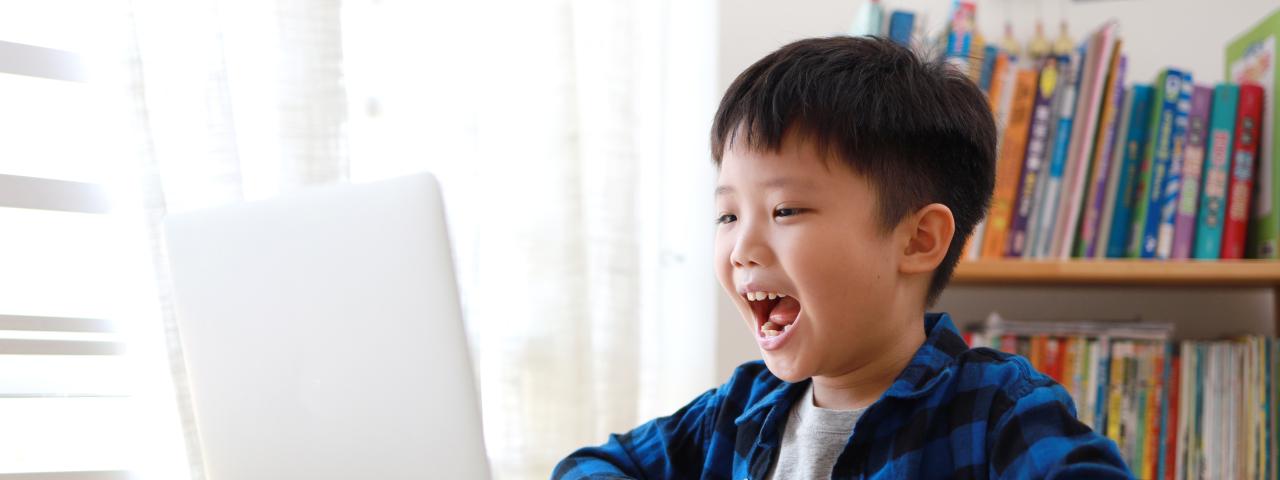
There’s no way around it: Since the pandemic began, people around the world, of all ages, are spending lots more time looking at screens. This is particularly true for children, as many schools shifted from the classroom to the computer. A survey conducted by Ipsos and the Global Myopia Awareness Coalition found that 44 percent of US children are using electronic devices for over four hours a day, more than double the rate prior to the pandemic.
Naturally, there are worries about the effects on physical activity, loneliness and sociological gaps. But in the US, I think not enough people are considering another potential side effect of living through screens: eye damage.
Simply put, our eyes aren’t built to read on screens. Several aspects — such as viewing angles and screen glare — force our eyes to work harder than they do while studying a printed page. That strain, plus the extensive close-up work that online school requires, may lead to eye problems, some of which can last a lifetime.
As a scientist who has dedicated a lot of my career to studying the visual system and protecting the human eye, I am worried.
In the US and other countries, monitoring eye health isn’t a major public health priority, particularly when in the grips of a pandemic. This isn’t the case in China, where I spend a lot of my time — there, eye health is more closely watched, particularly in children. And troubling trends are emerging: A January study of more than 120,000 children in China found that the rate of myopia (nearsightedness, or trouble seeing things at a distance) among children ages six to eight increased markedly during a home confinement period, when schools closed from January through May due to Covid-19. Among six-year-olds, the rate of myopia following lockdown was 21.5 percent; before Covid, the highest yearly rate in that age group since 2015 was 5.7 percent.
I suspect that myopia rates are increasing in other countries that don’t monitor eye health as closely as China does. It’s a particular issue for elementary school-aged children, whose eyes may be especially susceptible to developing myopia. Myopia is more than an inconvenience: It can be costly to correct (requiring regular eye exams and glasses or contact lenses), and people with severe nearsightedness are at higher risk for additional conditions such as retinal tears, cataracts and macular degeneration, which may threaten their eyesight altogether
If uncorrected, myopia (or its cousin, farsightedness) can contribute to another eye problem directly related to screen time: computer vision syndrome, also known as digital eye strain, marked by blurred vision, dry eyes and neck and shoulder pain. The more time you spend reading on a screen, the more at risk you are. Not surprisingly, the spike in screen time we’ve seen with Covid is accompanied by reports of more digital eye strain around the world. One survey by researchers in India found that 50 percent of children taking online classes had digital eye strain.
The good news: There are easy steps people can take to protect and heal their eyes. The 20-20-20 rule — looking at least 20 feet in the distance for 20 seconds every 20 minutes spent on the screen — is key, and should be included as part of the curriculum in online schooling. In China, the Ministry of Education has said electronics can make up no more than 30 percent of teaching time, and students can’t spend more than 20 minutes each day on electronic homework.
For adults, it’s important to break up computer time with other screen-free tasks, such as making phone calls (not video calls, ideally), filing or anything that doesn’t require close-up work. Blink frequently, make sure your screen setup is ergonomic and consider a glare filter.
But here’s the best advice I can offer: Go outside. An analysis of 27 studies suggests it’s the combination of long screen time and less time outdoors that puts young children at greatest risk of myopia. One study of first-graders in China (average age of six) found that those who were given 40 extra minutes of outdoor time at school were 9 percent less likely to develop myopia over the next three years. Why? The outdoor environment provides bright and full-spectral light, rich spatial patterns across a wide range of scales, and sharp images of distant objects, all of which may protect the eyes from myopia.
So if you’re worried about the effect of Covid lockdowns on your eyes, I say: Stop reading this, and go outside.
By: Lu Zhong-Lin
This article originally appeared in Knowable Magazine on April 9, 2021. Knowable Magazine is an independent journalistic endeavor from Annual Reviews, a nonprofit publisher dedicated to synthesizing and integrating knowledge for the progress of science and the benefit of society.

